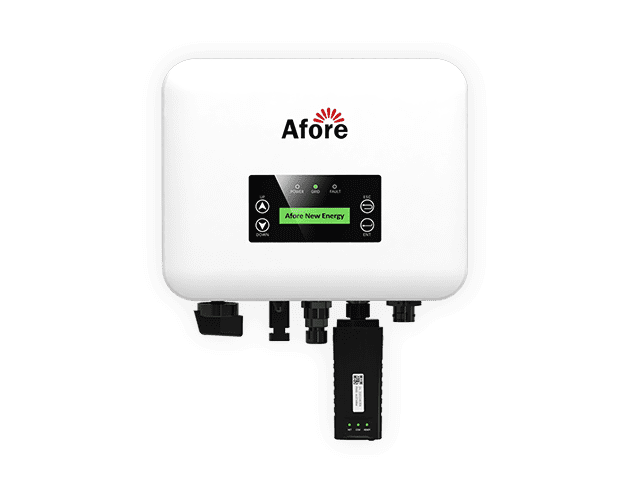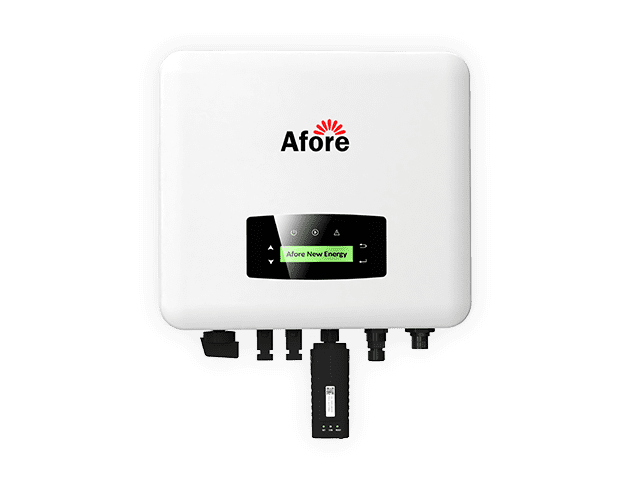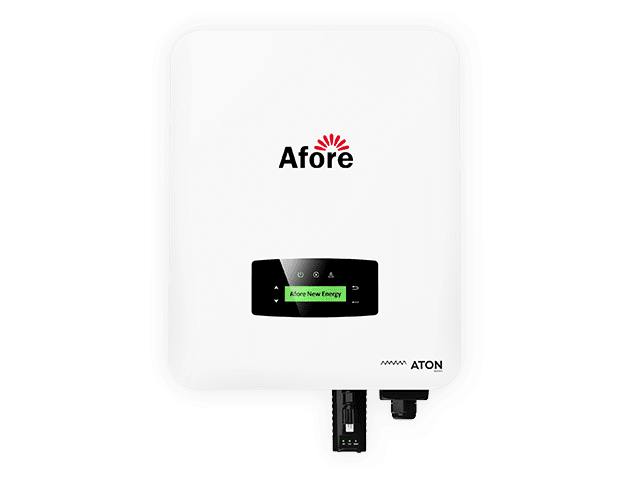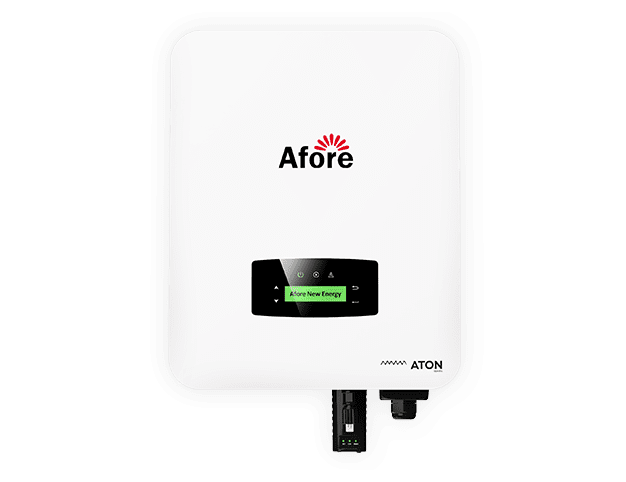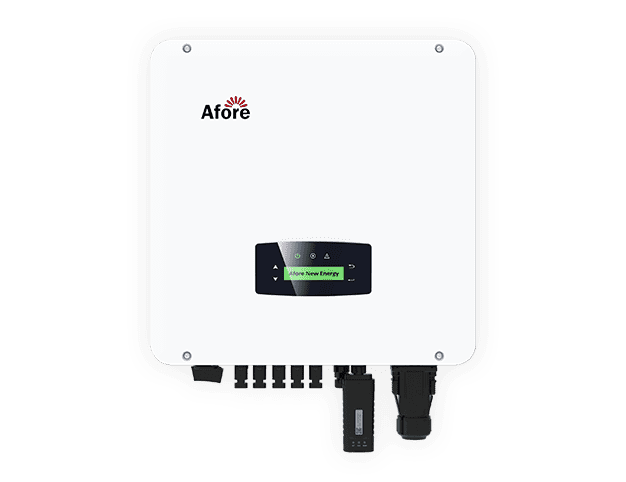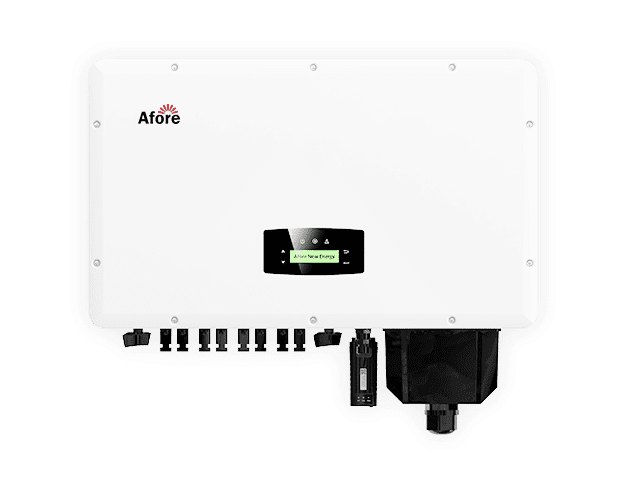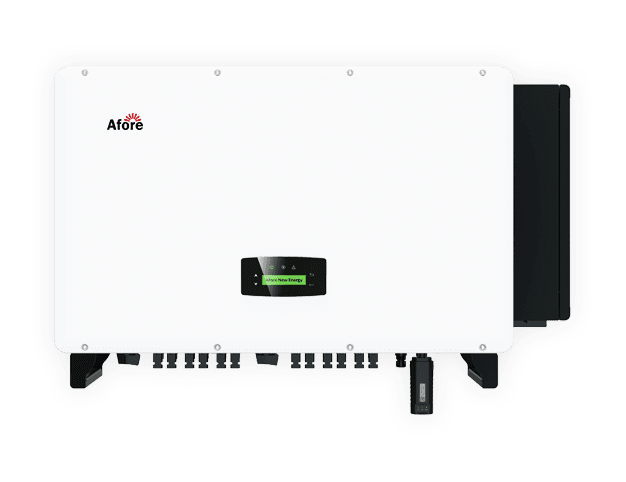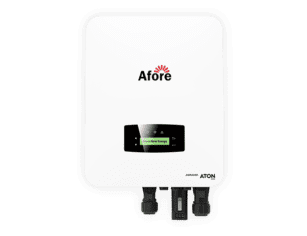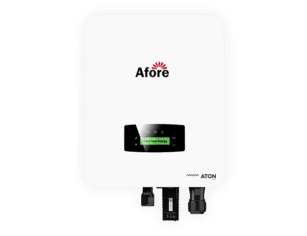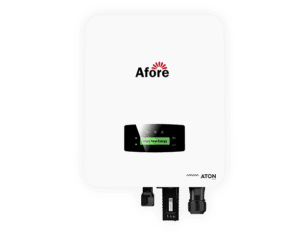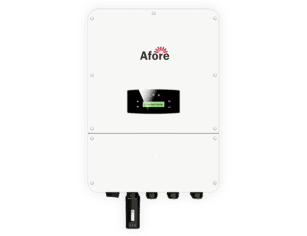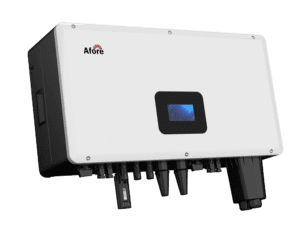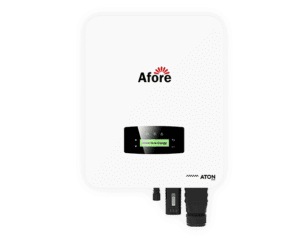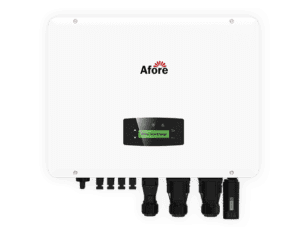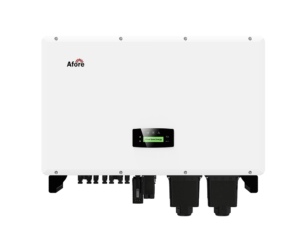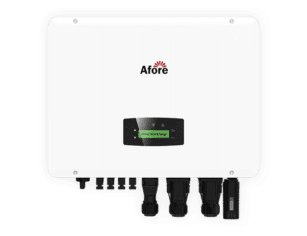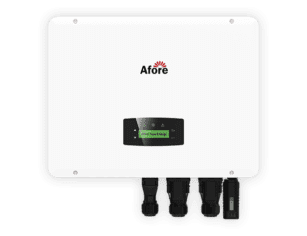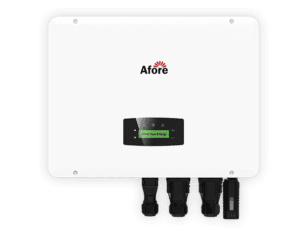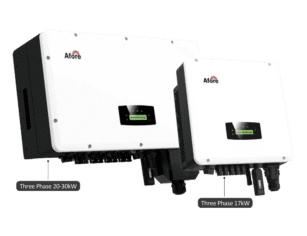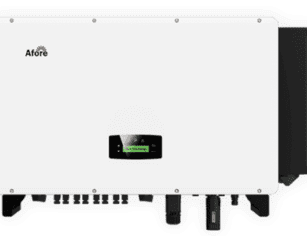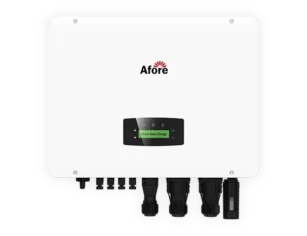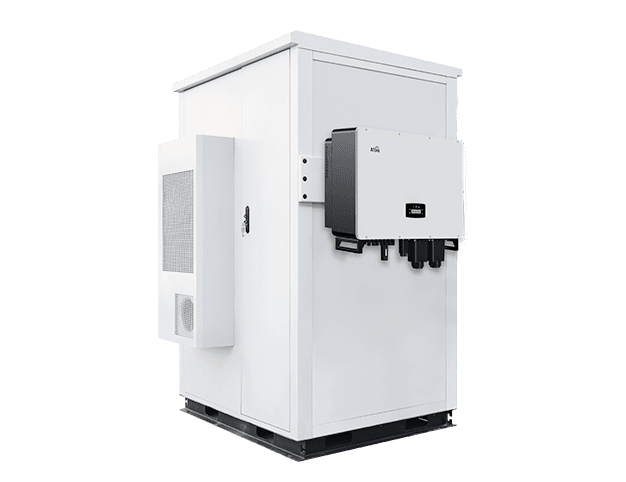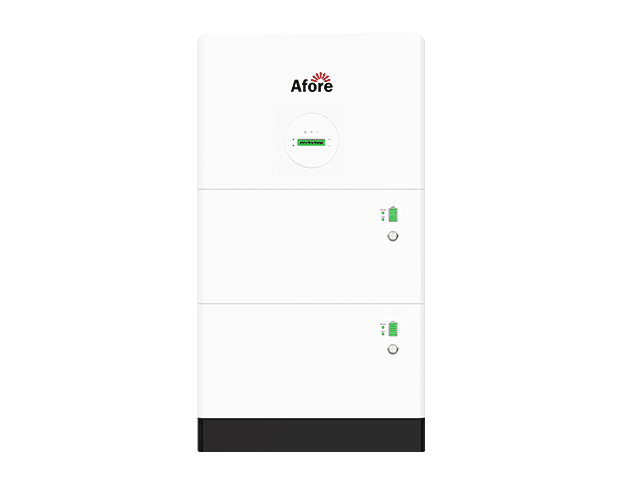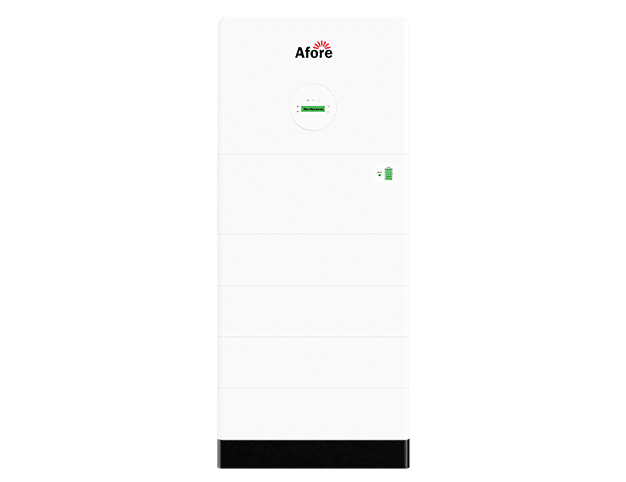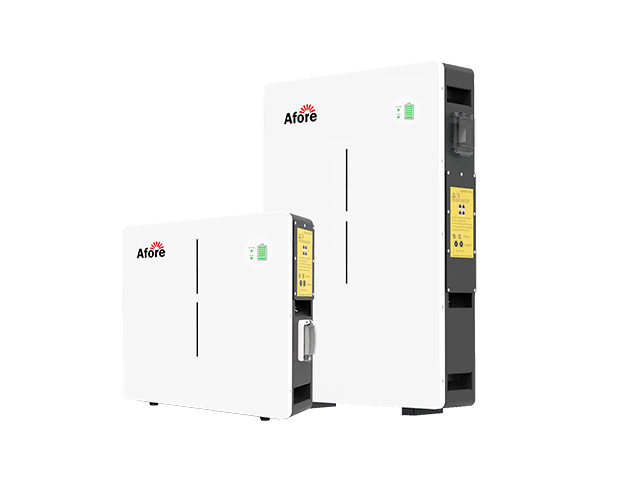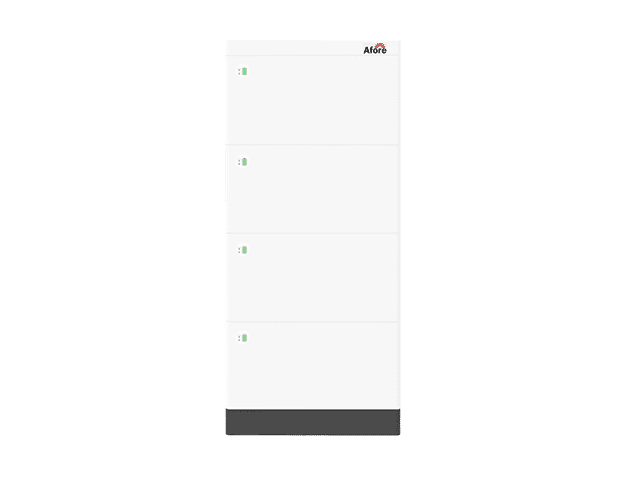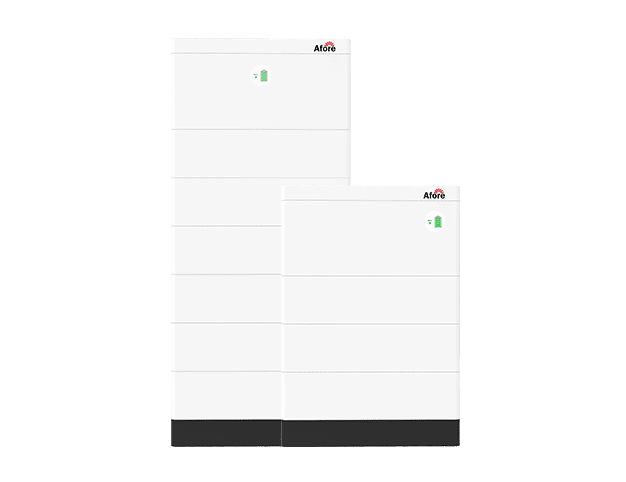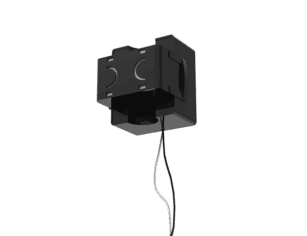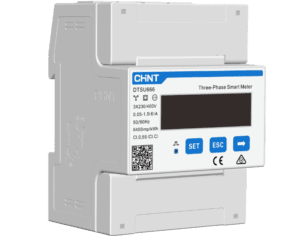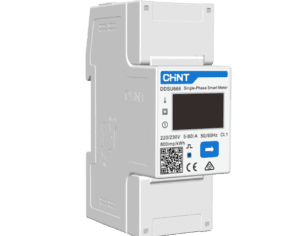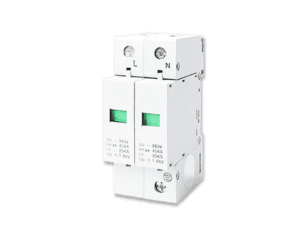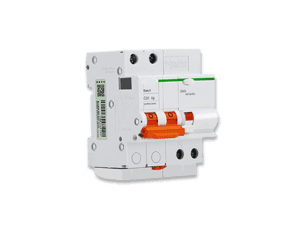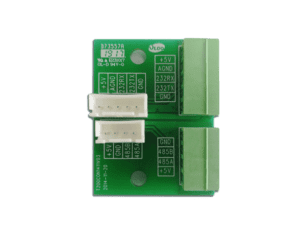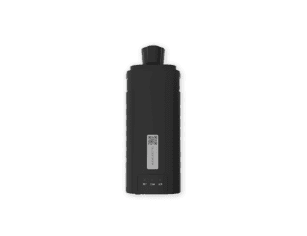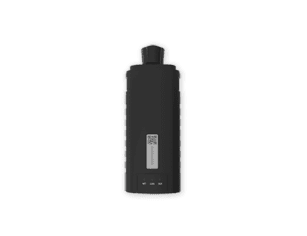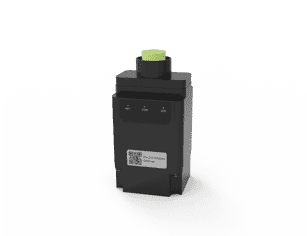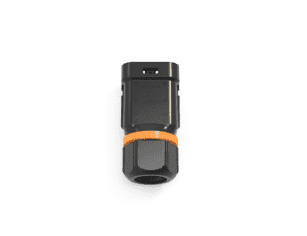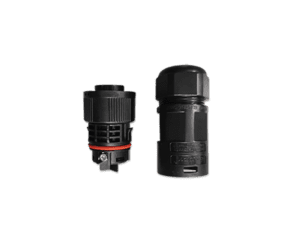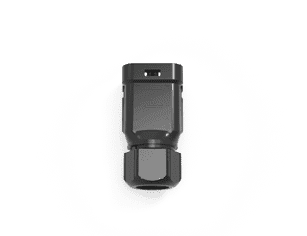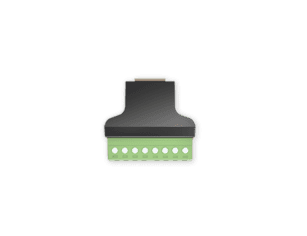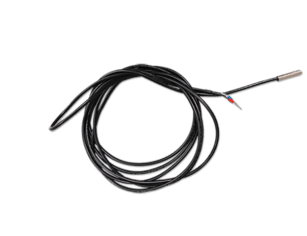Wechselrichter ohne Batterie: Intelligente Solarenergie einfach gemacht
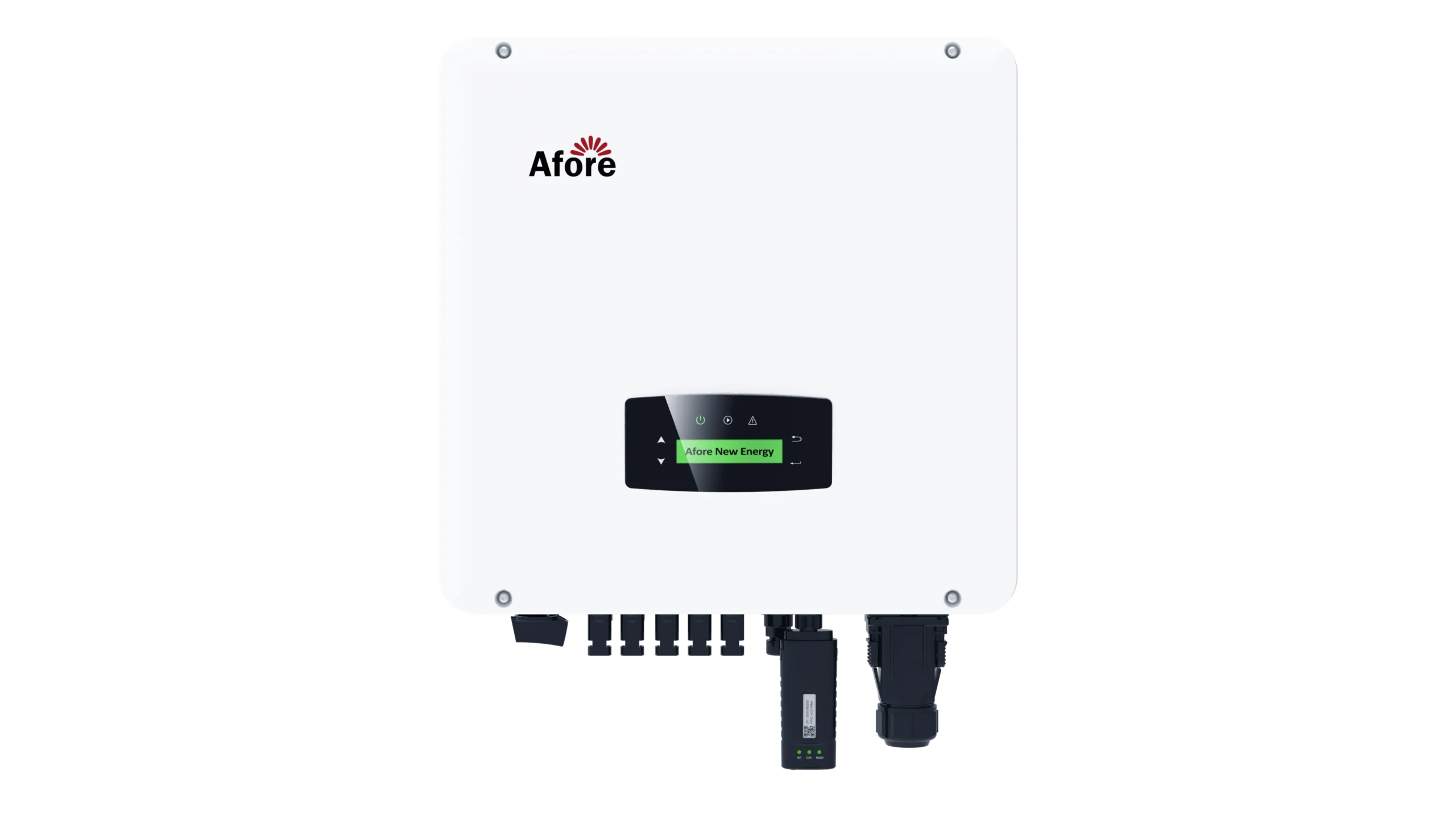
Inhaltsübersicht
In der Welt der erneuerbaren Energien wird die Idee, einen Wechselrichter ohne Batterie zu verwenden, immer populärer. Während Hausbesitzer und Unternehmen nach kostengünstigen und effizienten Solarenergielösungen suchen, taucht immer wieder die Frage auf: Braucht man wirklich eine Batterie, um ein Solarsystem zu betreiben? Die kurze Antwort? Nicht immer. Je nach Konfiguration ist es durchaus möglich, Ihr Haus mit einem Solarwechselrichter zu versorgen, ohne jemals eine Batteriebank zu installieren.
Aber es ist nicht so einfach, ein paar Module anzuschließen und einen Schalter umzulegen. Um ein intelligentes und nachhaltiges Energiesystem zu entwerfen, ist es wichtig zu verstehen, wie Solarwechselrichter funktionieren, welche Typen den batterielosen Betrieb unterstützen und welche Kompromisse Sie eingehen müssen. In diesem umfassenden Leitfaden erläutern wir genau, wann und wie Sie einen Wechselrichter ohne Batteriepufferung einsetzen können - mit allen Vor- und Nachteilen und den praktischen Anwendungsfällen, die Sie kennen sollten.
Ganz gleich, ob Sie die Anschaffungskosten senken, Ihr System vereinfachen oder einfach nur umweltfreundlichere Energieoptionen erkunden möchten, dieser Artikel wird Ihnen bei der Entscheidung helfen, ob ein batterieloses System für Ihre Bedürfnisse geeignet ist. Lassen Sie uns ins Detail gehen.
Die Funktionsweise von Wechselrichtern verstehen
Was ist ein Solarwechselrichter?
Ein Solarwechselrichter ist der Motor einer jeden funktionierenden Solarstromanlage. Seine Hauptaufgabe? Er wandelt den von den Solarmodulen erzeugten Gleichstrom (DC) in Wechselstrom (AC) um - den Strom, auf den Ihre Haushaltsgeräte und das Stromnetz angewiesen sind. Ohne ihn sind Solarmodule für ein modernes Haus im Wesentlichen nutzlos.
Es gibt verschiedene Arten von Solarwechselrichtern, die je nach Systemgröße, Design und Energiezielen unterschiedliche Zwecke erfüllen:
- String-Wechselrichter: Diese Wechselrichter werden am häufigsten in Wohngebieten eingesetzt. Alle Ihre Solarmodule sind in Reihe (oder "String") geschaltet, und der Wechselrichter wandelt ihre kombinierte Leistung um.
- Mikro-Wechselrichter: Mikrowechselrichter werden auf jedem einzelnen Modul installiert und eignen sich hervorragend für Dächer mit Schatten oder unterschiedlichen Neigungen. Sie ermöglichen eine Optimierung auf Modulebene.
- Hybrid-Wechselrichter: Diese fortschrittlichen Geräte kombinieren die Eigenschaften von netzgekoppelten und netzunabhängigen Systemen. Ein hybrider Solarwechselrichter kann Energie aus Solarmodulen, dem Netz und Batterien verwalten - alles in einem.
Die Funktionsweise Ihres Solarwechselrichters zu verstehen, ist der erste Schritt, um festzustellen, ob Sie Ihr System ohne Batterie betreiben können oder nicht. Und Spoiler-Alarm: Viele Wechselrichter sind heute so gebaut, dass sie genau das können.
Die Rolle von Batterien in herkömmlichen Solarsystemen
Bei herkömmlichen Solaranlagen werden Batterien verwendet, um den tagsüber erzeugten überschüssigen Strom zu speichern. Diese gespeicherte Energie kann dann in der Nacht oder bei Stromausfällen genutzt werden. Betrachten Sie die Batterien als Versicherungspolice für Ihr Solarsystem - sie liefern Strom, wenn die Sonne nicht scheint und das Stromnetz unzuverlässig ist.
Hier sehen Sie, was Batterien in herkömmlichen Systemen bieten:
- Zugang zu Energie in der Nacht: Solarmodule erzeugen nur Strom, wenn die Sonne scheint. Batterien sorgen dafür, dass auch nach Einbruch der Dunkelheit Energie zur Verfügung steht.
- Schutz vor Stromausfällen: In Gebieten mit häufigen Netzausfällen kann ein Batterie-Backup die Rettung sein.
- Energieunabhängigkeit: Für netzunabhängige Systeme sind Batterien unerlässlich, um eine kontinuierliche Stromversorgung zu gewährleisten.
Aber Batterien haben auch Nachteile. Sie können die Anfangskosten eines Solarprojekts erheblich erhöhen, erfordern eine laufende Wartung und müssen je nach Technologie in der Regel nach 5 bis 15 Jahren ausgetauscht werden. Deshalb fragen sich viele Solarteure: "Kann ich meinen Wechselrichter auch ohne Batterie betreiben?"
Kann mein Wechselrichter ohne Batterie arbeiten?
Die Antwort ist ja - unter den richtigen Bedingungen kann Ihr Wechselrichter ohne Batterie durchaus eine Solaranlage betreiben.
Bei netzgekoppelten Systemen ist eine Batterie nicht erforderlich. Während der Sonnenstunden speisen die Solarmodule den Strom durch den Wechselrichter und versorgen Ihr Haus in Echtzeit mit Strom. Überschüssige Energie kann in das Stromnetz eingespeist werden, was Ihnen oft durch die Einspeisevergütung gutgeschrieben wird.
Bei Hybridsystemen haben Sie sogar noch mehr Flexibilität. Viele Hybrid-Wechselrichter sind für den Betrieb mit oder ohne Batterie ausgelegt. Sie können mit Solarmodulen und einem Hybrid-Wechselrichter beginnen und später einen Speicher hinzufügen, wenn sich Ihre Bedürfnisse ändern.
Allerdings gibt es auch Einschränkungen. Wenn Sie netzunabhängig sind oder in einem Gebiet mit häufigen Stromausfällen leben, bedeutet die Verwendung eines Wechselrichters ohne Batterie, dass Sie nachts oder bei nachlassender Solarproduktion keinen Strom haben. Dieses System funktioniert am besten an Orten mit einem stabilen Stromnetz und gleichmäßigem Sonnenlicht.
Kurz gesagt, ob Ihr Wechselrichter ohne Batterie funktioniert, hängt von der Systemauslegung, dem Wechselrichtertyp und der Zuverlässigkeit des örtlichen Netzes ab. Bei richtiger Konfiguration ist dies ein hocheffizienter und kostengünstiger Ansatz für die Solarenergie.
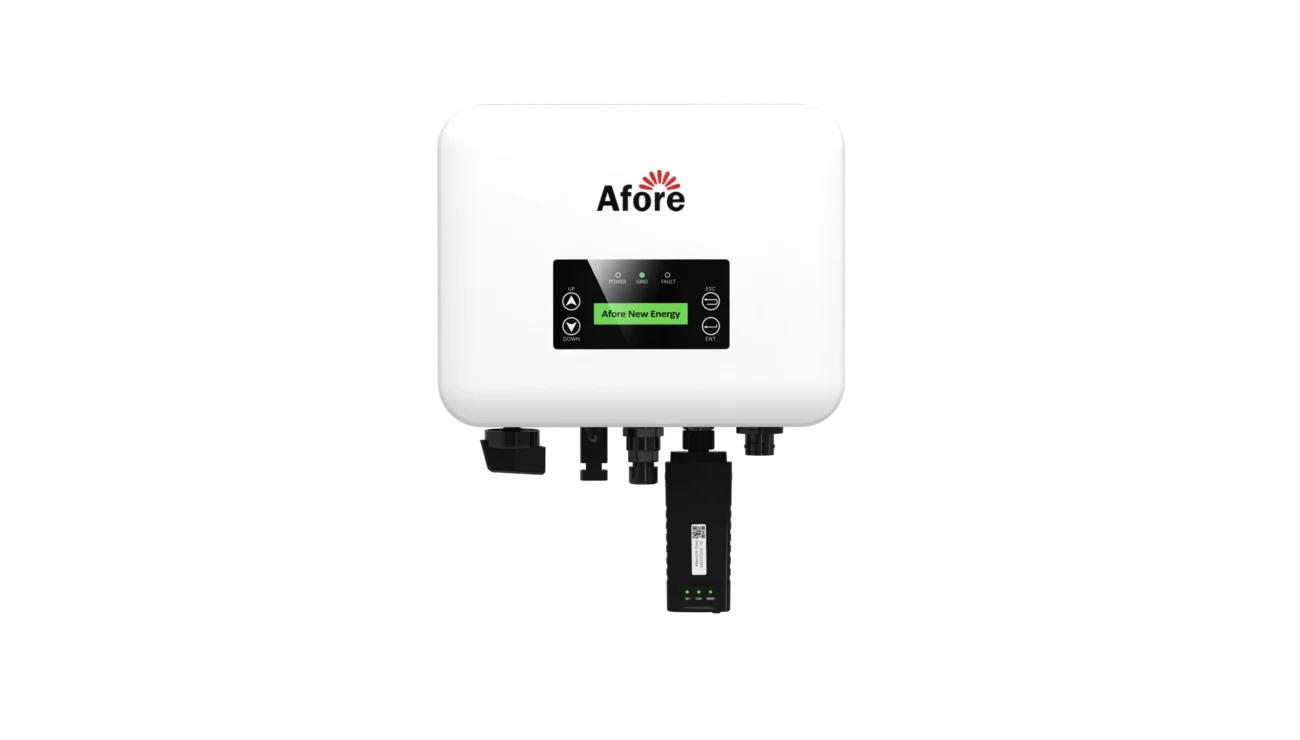
Typen von Wechselrichtern und Batterieanforderungen
Die Wahl des richtigen Solarwechselrichters ist bei der Planung eines Solarenergiesystems von entscheidender Bedeutung - vor allem, wenn Sie Ihren Wechselrichter ohne Batterieunterstützung betreiben möchten. Nicht alle Wechselrichter sind gleich, und jede Kategorie erfüllt einen bestimmten Zweck, der von Ihrer Netzanbindung, Ihrem Bedarf an Backup und Ihrem Budget abhängt.
Schauen wir uns die drei Haupttypen von Wechselrichtern und ihre Beziehung zu Batteriespeichern genauer an.
Off-Grid-Wechselrichter
Netzunabhängige Wechselrichter sind für die vollständige Energieunabhängigkeit konzipiert. Sie werden häufig an abgelegenen Orten eingesetzt, wo es keinen Zugang zum öffentlichen Stromnetz gibt - auf Bauernhöfen, in Hütten oder auf netzunabhängigen Gehöften. Diese Systeme verlassen sich vollständig auf Sonnenkollektoren und Batterien, um rund um die Uhr Strom zu liefern.
In einem netzunabhängigen System sind Batterien unverzichtbar. Ohne sie können Sie überschüssige Solarenergie nicht für die Nacht oder bewölkte Tage speichern. Der Betrieb eines Wechselrichters ohne Batterie ist in diesem Zusammenhang einfach nicht machbar. Sie würden in dem Moment, in dem die Solarproduktion sinkt, den Strom verlieren.
Hier erfahren Sie, warum Batterien in netzunabhängigen Wechselrichtersystemen unerlässlich sind:
- Kein Versorgungsnetz, auf das man zurückgreifen könnte: Wenn die Sonne untergeht, endet die Stromerzeugung - es sei denn, eine Batterie springt ein.
- Spannungsstabilisierung: Batterien helfen dabei, die Spannung zu regulieren und einen konstanten Strom zu liefern, um Geräte zu schützen.
- Energieautonomie: Netzunabhängige Nutzer brauchen Speicher, um die Zuverlässigkeit zu erhalten und Unterbrechungen zu vermeiden.
Einige neuere Modelle von netzunabhängigen Solarwechselrichtern sind mit intelligenten Steuerungen und Generatoren als optionale Backups ausgestattet, aber die Batterien bleiben das Herzstück dieser Systeme. Wenn Sie eine netzunabhängige Anlage planen, ist ein batterieloser Ansatz keine realistische Option.
Netzgekoppelte Wechselrichter
Netzgekoppelte Wechselrichter, auch bekannt als netzgekoppelte oder netzinteraktive Wechselrichter, werden am häufigsten in privaten und gewerblichen Solaranlagen eingesetzt. Diese Wechselrichter sind speziell dafür ausgelegt, mit dem örtlichen Stromnetz zu harmonieren.
Im Gegensatz zu netzunabhängigen Systemen sind netzgekoppelte Solarwechselrichter in der Lage, ganz ohne Batterien zu arbeiten. Sie wandeln die Sonnenenergie in Echtzeit um und versorgen Ihr Haus bei Tageslicht direkt mit Strom. Überschüssiger Strom wird in das Netz eingespeist, und wenn die Solarenergie nicht ausreicht, wie etwa nachts oder an bewölkten Tagen, beziehen Sie Strom aus dem Netz.
Hier kommt der Wechselrichter ohne Batterie zum Einsatz:
- Niedrigere Installationskosten: Sie müssen nicht in teure Batteriespeicher investieren.
- Vorteile des Net Metering: Sie können Gutschriften für den überschüssigen Strom erhalten, den Sie in das Netz zurückspeisen.
- Keine Wartung der Lagerkomponenten: Weniger bewegliche Teile bedeuten im Laufe der Zeit weniger Wartungsaufwand.
Netzgekoppelte Systeme haben jedoch einen Nachteil. Bei einem Stromausfall schaltet sich Ihr Wechselrichter ohne Batterie automatisch ab, um die Mitarbeiter des Energieversorgers zu schützen - ein Sicherheitsprotokoll, das als "Anti-Insellösung" bezeichnet wird. Das bedeutet, dass Ihre Paneele zwar Strom erzeugen können, das System aber bei Stromausfällen keinen Strom mehr liefert, es sei denn, Sie haben eine Batterie oder einen Notstromgenerator.
Hybrid-Wechselrichter
Hybrid-Wechselrichter bieten das Beste aus beiden Welten. Diese vielseitigen Solarwechselrichter können im netzgekoppelten Modus, im netzunabhängigen Modus oder irgendwo dazwischen funktionieren. Die attraktivste Eigenschaft eines Hybrid-Wechselrichters ist seine Flexibilität - vor allem, wenn Sie mit einem Wechselrichter ohne Batterie beginnen und später einen Speicher hinzufügen möchten.
Das macht die Hybrid-Wechselrichter so einzigartig:
- Batterie optional: Sie können sie im netzgekoppelten Modus ohne Speicher betreiben und dann bei Bedarf Batterien hinzufügen.
- Intelligentes Energiemanagement: Bei den meisten Modellen können Sie steuern, wann und wie die Solarenergie genutzt wird - sei es für den Eigenverbrauch, die Netzeinspeisung oder die Speicherung.
- Nahtlose Integration der Notstromversorgung: Wenn Batterien hinzugefügt werden, können Hybrid-Wechselrichter bei Stromausfällen Strom liefern.
Für viele Solarteure ist ein Hybrid-Solarwechselrichter eine zukunftsweisende Investition. Er bietet maximale Kontrolle über die Energienutzung und unterstützt die langfristige Erweiterung des Systems.
Dennoch ist es wichtig zu wissen, dass nicht alle Hybrid-Wechselrichter ohne Batterien gleich gut funktionieren. Einige Modelle der unteren Leistungsklasse benötigen zumindest ein Minimum an Batterien, um die Systemstabilität zu gewährleisten oder Spitzenlasten abzufangen. Deshalb ist es wichtig, mit einem qualifizierten Installateur zusammenzuarbeiten und sich für eine renommierte Marke - wie Afore - zu entscheiden.
Wenn Sie noch unschlüssig sind, ob Sie jetzt oder später in Batterien investieren sollen, ist ein Hybrid-Wechselrichter ohne Batterie oft die praktischste und skalierbarste Lösung.
Vor- und Nachteile der Verwendung eines Wechselrichters ohne Batterie
Die Entscheidung, den Wechselrichter ohne Batterie zu betreiben, erfreut sich zunehmender Beliebtheit bei Solarnutzern, die Wert auf Einfachheit, niedrigere Kosten und eine rationelle Einrichtung legen. Aber wie jede Entscheidung im Bereich der erneuerbaren Energien bringt auch diese Konfiguration sowohl Vorteile als auch Nachteile mit sich.
Lassen Sie uns die wichtigsten Vor- und Nachteile eines Solarwechselrichters ohne Batteriespeicher untersuchen, damit Sie eine fundierte Entscheidung treffen können.
Vorteile
1. Geringere Vorabkosten
Einer der überzeugendsten Gründe für die Verwendung eines Wechselrichters ohne Batterie sind die erheblichen Einsparungen bei den Installationskosten. Batterien, insbesondere Lithium-Ionen-Batterien, können 30-50% der Gesamtkosten eines Solarsystems ausmachen. Durch den Verzicht auf die Batterie können Hausbesitzer und kleine Unternehmen die Anfangsinvestition senken und die Amortisationszeit verkürzen.
So kann beispielsweise ein typischer Hybrid-Wechselrichter ohne Batterie Tausende weniger kosten als ein vollständig netzunabhängiges System mit Speicher. Dies macht Solaranlagen für Menschen mit begrenztem Budget oder für diejenigen, die schrittweise aufsteigen wollen, leichter zugänglich.
2. Einfachere Installation und Wartung
Der Betrieb eines Solarwechselrichters ohne Batterie vereinfacht den gesamten Installationsprozess. Es besteht keine Notwendigkeit für eine komplexe Batterieverdrahtung, Laderegler oder zusätzliche Sicherheitssysteme. Weniger Komponenten bedeuten schnellere Installationen und ein geringeres Ausfallrisiko.
Außerdem müssen die Batterien ständig gewartet und schließlich ersetzt werden. Durch den Verzicht auf Batterien entfallen Wartungsaufgaben wie die Überprüfung des Elektrolytstands (bei Blei-Säure-Batterien) oder die Verwaltung der Lade-/Entladezyklen.
3. Effiziente Nutzung tagsüber
Wenn der Großteil Ihres Energieverbrauchs tagsüber anfällt - wie in Büros, Schulen oder im Einzelhandel - ist die Verwendung eines Wechselrichters ohne Batterie äußerst effizient. Die Solarmodule speisen die Energie über den Solarwechselrichter direkt in Ihre Geräte ein, wodurch der mit dem Laden und Entladen von Batterien verbundene Energieverlust entfällt.
Dieses Modell für den Direktbetrieb sorgt dafür, dass Ihr Solarsystem während der Hauptsonnenstunden maximale Leistung erbringt und nur wenig Energie verschwendet.
4. Umweltschonend
Batterien - insbesondere solche, die mit Schwermetallen und Seltenen Erden hergestellt werden - haben einen ökologischen Fußabdruck. Sie erfordern eine energieintensive Herstellung und werden schließlich zu Elektronikschrott. Die Wahl eines Wechselrichters ohne Batterie reduziert den Bedarf an diesen Materialien und trägt zu einer saubereren Solarlösung bei.
5. Erweiterbar für zukünftige Lagerung
Mit einem Hybrid-Solarwechselrichter können Sie später einen Batteriespeicher hinzufügen, wenn sich Ihre Bedürfnisse ändern. Diese Zukunftssicherheit gibt Ihnen Flexibilität, ohne dass Sie sich vom ersten Tag an auf ein teures, voll ausgestattetes System festlegen müssen. Für Nutzer, die auf fallende Batteriepreise achten oder auf die nächste Generation von Technologien warten, ist dies ein kluger strategischer Schritt.
Benachteiligungen
1. Kein Strom bei Netzausfällen
Der größte Nachteil eines Wechselrichters ohne Batterie ist das Fehlen einer Notstromversorgung bei Stromausfällen. Auch wenn Ihre Solarmodule Strom erzeugen, schalten sich netzgekoppelte Wechselrichter bei Stromausfällen automatisch ab, um die Mitarbeiter des Energieversorgers zu schützen - Ihr Haus ist dann ohne Strom.
Dies kann in Gebieten mit unzuverlässiger Stromversorgung oder bei extremen Wetterereignissen mit häufigen oder lang anhaltenden Stromausfällen ein Problem darstellen.
2. Abhängigkeit vom Tageslicht
Ohne Batteriespeicher kann Ihre Solaranlage nur dann nutzbaren Strom erzeugen, wenn die Sonne scheint. Das bedeutet, dass nachts keine Energie erzeugt wird und die Leistung an stark bewölkten Tagen begrenzt ist. Wenn Ihr Haushalt den meisten Strom in den Abendstunden verbraucht, passt diese Konfiguration möglicherweise nicht gut zu Ihrem Nutzungsverhalten.
Zwar können Sie mit Net-Metering die Nachfrage in der Nacht ausgleichen, indem Sie Ihren Überschuss am Tag anrechnen lassen, aber nicht alle Regionen bieten günstige Bedingungen oder einen einheitlichen Zugang.
3. Anhaltende Abhängigkeit vom Versorgungsnetz
Ein Wechselrichter ohne Batterie funktioniert am besten, wenn er auf eine stabile Netzverbindung zurückgreifen kann. Dies schränkt Ihre Energieunabhängigkeit ein und macht die Zuverlässigkeit Ihres Systems von der Leistung des allgemeinen Stromnetzes abhängig. Für Benutzer, die volle Autonomie oder ein netzunabhängiges Leben anstreben, bleibt ein batterieloses Design hinter den Erwartungen zurück.
4. Keine Lastverschiebung oder Reduzierung der Nachfragespitzen
Ohne eine Batterie können Sie keine kostengünstige oder überschüssige Solarenergie speichern, um sie in teuren Spitzenlastzeiten zu nutzen. In Regionen, in denen nach Verbrauch abgerechnet wird, kann dies zu höheren Stromkosten führen, obwohl Sie Solarmodule haben.
Ein mit einer Batterie ausgestatteter Solarwechselrichter ermöglicht eine strategische Lastverschiebung, indem er gespeicherte Energie abruft, wenn die Strompreise steigen. Bei einem batterielosen Wechselrichter ist diese Flexibilität nicht mehr gegeben.
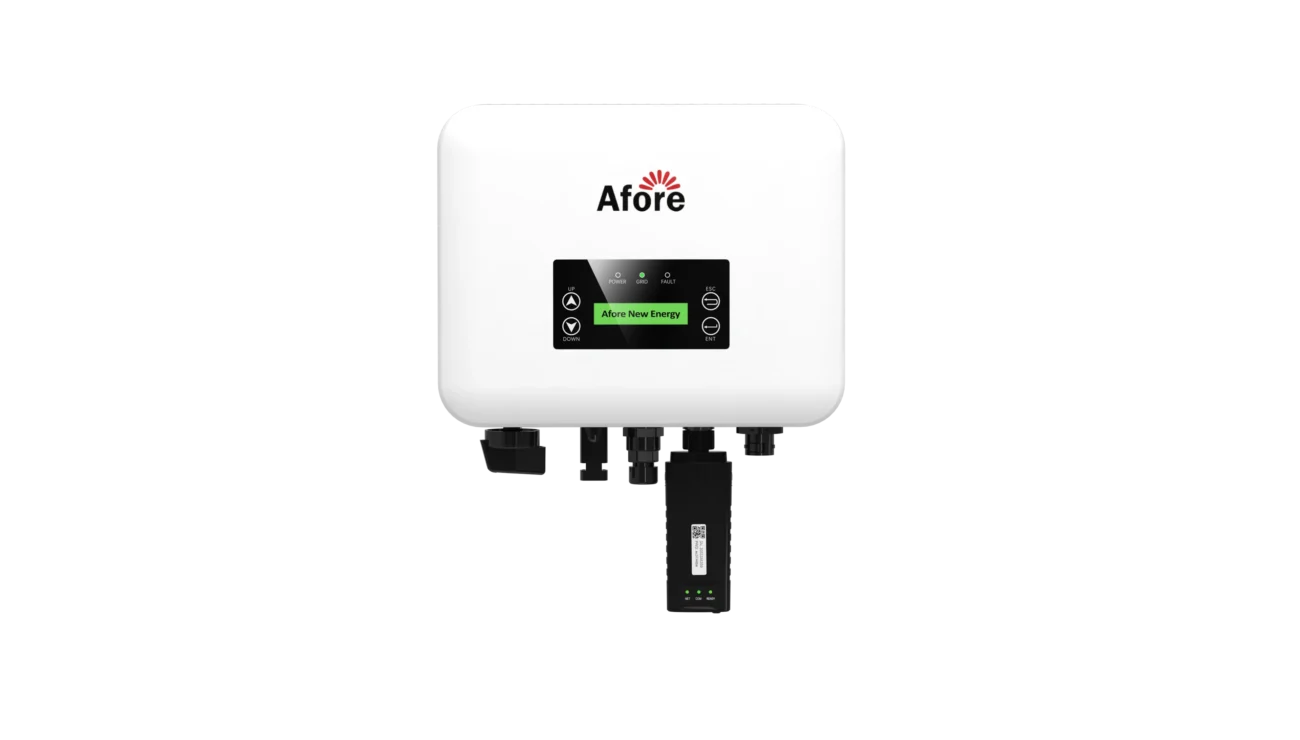
Häufige Szenarien für die Verwendung eines batterielosen Wechselrichters
Netzgekoppelte Solarsysteme
In städtischen oder vorstädtischen Gebieten mit zuverlässiger Stromversorgung installieren viele Haushalte Wechselrichter ohne Batterien als Teil eines netzgekoppelten Systems. Auf diese Weise können sie ihr Haus tagsüber mit Strom versorgen und sich nachts oder bei Bewölkung auf das Netz verlassen.
So kann beispielsweise ein Hausbesitzer in Johannesburg mit einem Afore-Solarwechselrichter tagsüber die Sonnenenergie direkt nutzen und nachts Strom aus dem Netz beziehen, ohne jemals eine Batterie zu benötigen.
Nutzung nur tagsüber
Manche Unternehmen oder Einrichtungen sind nur tagsüber in Betrieb, z. B. Schulen, landwirtschaftliche Betriebe oder Produktionsstätten. In solchen Fällen ist die Verwendung eines Wechselrichters ohne Batterie absolut logisch, da der Strom nur dann benötigt wird, wenn die Sonne scheint.
Notfall- oder Kostenspar-Setups
Bei vorübergehenden Installationen oder in Fällen, in denen die Kosten eine wichtige Rolle spielen, können Sie mit einem Solar-Wechselrichtersystem beginnen, das ohne Batterie arbeitet, um jetzt von der Sonnenenergie zu profitieren und später einen Speicher hinzuzufügen.
Technische Überlegungen und Installationstipps
Kann man einen Wechselrichter direkt mit Solarmodulen betreiben?
Ja, das kann man. Aber es ist nicht so einfach, ein Paneel mit einem Wechselrichter zu verdrahten. Der Wechselrichter muss so ausgelegt sein, dass er die von den Modulen erzeugte Spannung und Stromstärke verarbeiten kann. Netzgekoppelte Wechselrichter und einige Hybrid-Wechselrichter sind dafür ausgelegt und ermöglichen den direkten Anschluss von Solarmodulen ohne eine dazwischenliegende Batterie.
Bedenken Sie jedoch, dass Spannungsschwankungen zu Instabilität führen können. Daher sind die richtige Dimensionierung des Systems, MPPT-Funktionen (Maximum Power Point Tracking) und eine professionelle Installation entscheidend.
Kann ich ein Solarmodul ohne Batterie an einen Wechselrichter anschließen?
Ganz genau. Dies ist eine übliche Vorgehensweise bei netzgekoppelten Systemen. Sie schließen die Solarmodule einfach an den Solarwechselrichter an, und der Wechselrichter speist den Strom direkt in Ihr Haus oder das Netz ein.
Systeme wie die von Afore unterstützen diese Konfiguration. Stellen Sie einfach sicher, dass Ihr Solarwechselrichter kompatibel und für den Netzanschluss zertifiziert ist.
Die Wahl des richtigen Wechselrichtertyps
Wenn Sie einen Wechselrichter ohne Batterie planen, wählen Sie einen hocheffizienten Solarwechselrichter mit Netzeinspeise- oder Hybridfunktion. Wichtige Spezifikationen, auf die Sie achten sollten:
- Eingangsspannungsbereich
- MPPT-Eingangsleistung
- Ausgangsleistung
- Zertifizierungen der Netzkonformität
Marken wie Afore bieten fortschrittliche Hybrid-Wechselrichter an, die den batterielosen Betrieb direkt nach dem Auspacken unterstützen.
Hybrid-Wechselrichter - Flexibilität mit oder ohne Batterien
Mit der Weiterentwicklung der Solartechnologie werden Hybrid-Wechselrichter zur bevorzugten Lösung für Nutzer, die das Beste aus netzgekoppelten und netzunabhängigen Systemen haben wollen. Dank ihrer Flexibilität sind sie ideal für alle, die heute einen Wechselrichter ohne Batterie in Betracht ziehen, aber in Zukunft mit Speicheroptionen erweitern möchten.
Was sind Hybrid-Wechselrichter?
Ein hybrider Solarwechselrichter ist ein fortschrittlicher Wechselrichtertyp, der Eingänge von mehreren Stromquellen - einschließlich Solarmodulen, dem Stromnetz und Batterien - verwalten kann, während er den Strom auf intelligente Weise je nach Systemeinstellungen und Bedarf verteilt.
Im Gegensatz zu herkömmlichen Wechselrichtern, die auf einen Modus festgelegt sind (entweder netzgebunden oder netzunabhängig), bieten Hybrid-Wechselrichter einen dynamischen Energiefluss. Sie können:
- Versorgen Sie Ihr Haus oder Geschäft tagsüber direkt mit Sonnenenergie
- Überschüssigen Solarstrom ins Netz zurückspeisen
- Speichern Sie überschüssige Energie in Batterien zur späteren Verwendung
- Automatisches Umschalten auf Batteriestrom bei Stromausfällen
Eine der attraktivsten Eigenschaften eines Hybridsystems ist die Möglichkeit, den Wechselrichter zunächst ohne Batterie zu betreiben. Dieses System eignet sich gut für Regionen mit stabilem Stromnetz und ermöglicht es den Nutzern, die Kosten für die Speicherung hinauszuzögern und dennoch von der Solarstromerzeugung zu profitieren.
Moderne Hybrid-Wechselrichter sind in der Regel mit einer intelligenten Überwachungssoftware ausgestattet, die Energieanalysen in Echtzeit liefert und es den Nutzern ermöglicht, den Energieverbrauch und die Energieeinsparungen zu optimieren.
Dies macht Hybrid-Solarwechselrichter zu einer hervorragenden Option für:
- Hauseigentümer planen eine schrittweise Aufrüstung mit Solarenergie
- Unternehmen, die nach dem Prinzip der zeitabhängigen Abrechnung von Versorgungsleistungen arbeiten
- Nutzer, die sowohl jetzt Solarstrom sparen als auch in Zukunft vor Stromausfällen schützen wollen
Ganz gleich, ob Sie nur mit Solarmodulen und einem Wechselrichter ohne Batterie beginnen oder vom ersten Tag an ein komplettes Hybridsystem aufbauen, die Vielseitigkeit von Hybridwechselrichtern bietet praktische Vorteile in der Praxis.
Was sind die Nachteile eines Hybrid-Wechselrichters?
Hybrid-Solarwechselrichter bieten zwar viele Vorteile, sind aber auch nicht ohne Nachteile. Es ist wichtig, diese Überlegungen bei der Planung Ihres Solarsystems sorgfältig abzuwägen - vor allem, wenn Sie planen, mit einem Wechselrichter ohne Batterie zu beginnen und später zu erweitern.
1. Höhere Anfangskosten
Im Vergleich zu netzgekoppelten Standard-Wechselrichtern sind Hybridmodelle komplexer und daher teurer. Selbst wenn Sie sich für einen Hybrid-Wechselrichter ohne Batterie entscheiden, zahlen Sie für die eingebauten Funktionen zur Verwaltung der Speicherung und des Energieroutings.
Diese Vorabprämie ist sinnvoll, wenn Sie vorhaben, später Batterien hinzuzufügen, aber möglicherweise nicht kosteneffektiv für Benutzer, die nie planen, Speicher zu installieren.
2. Komplexe Installation und Konfiguration
Hybrid-Wechselrichter erfordern oft eine detailliertere Systemauslegung, insbesondere wenn Sie sie mit Batterien, Generatoren oder intelligenten Energiemanagementsystemen verbinden wollen. Eine fehlerhafte Konfiguration kann zu Ineffizienzen oder Kompatibilitätsproblemen führen.
Unerfahrene Installateure haben möglicherweise Probleme mit hybriden Anlagen, daher ist es wichtig, mit einem zertifizierten Solarteur zusammenzuarbeiten, der mit der Marke Ihres Wechselrichters vertraut ist.
3. Beschränkungen der Batteriekompatibilität
Nicht alle Hybrid-Wechselrichter sind mit jedem Batterietyp kompatibel. Einige sind nur für Lithium-Ionen-Batterien optimiert, während andere Blei-Säure-Batterien oder proprietäre Speichereinheiten unterstützen. Wenn Sie mit einem Wechselrichter ohne Batterie beginnen und später einen Speicher hinzufügen möchten, sind Sie möglicherweise an bestimmte Batteriemodelle oder -marken gebunden.
Dies kann die Flexibilität einschränken und die langfristigen Kosten in die Höhe treiben, insbesondere wenn in Zukunft bessere Batterietechnologien zur Verfügung stehen.
4. Ohne Batterie nicht immer voll funktionstüchtig
Während die meisten Hybrid-Solarwechselrichter den batterielosen Betrieb unterstützen, benötigen einige günstigere oder veraltete Modelle möglicherweise eine Mindestbatterieladung, um die Spannung zu stabilisieren oder interne Funktionen zu unterstützen. Daher ist es wichtig, die Fähigkeiten des Wechselrichters mit dem Hersteller oder Installateur abzustimmen, bevor Sie davon ausgehen, dass Sie völlig batterielos arbeiten können.
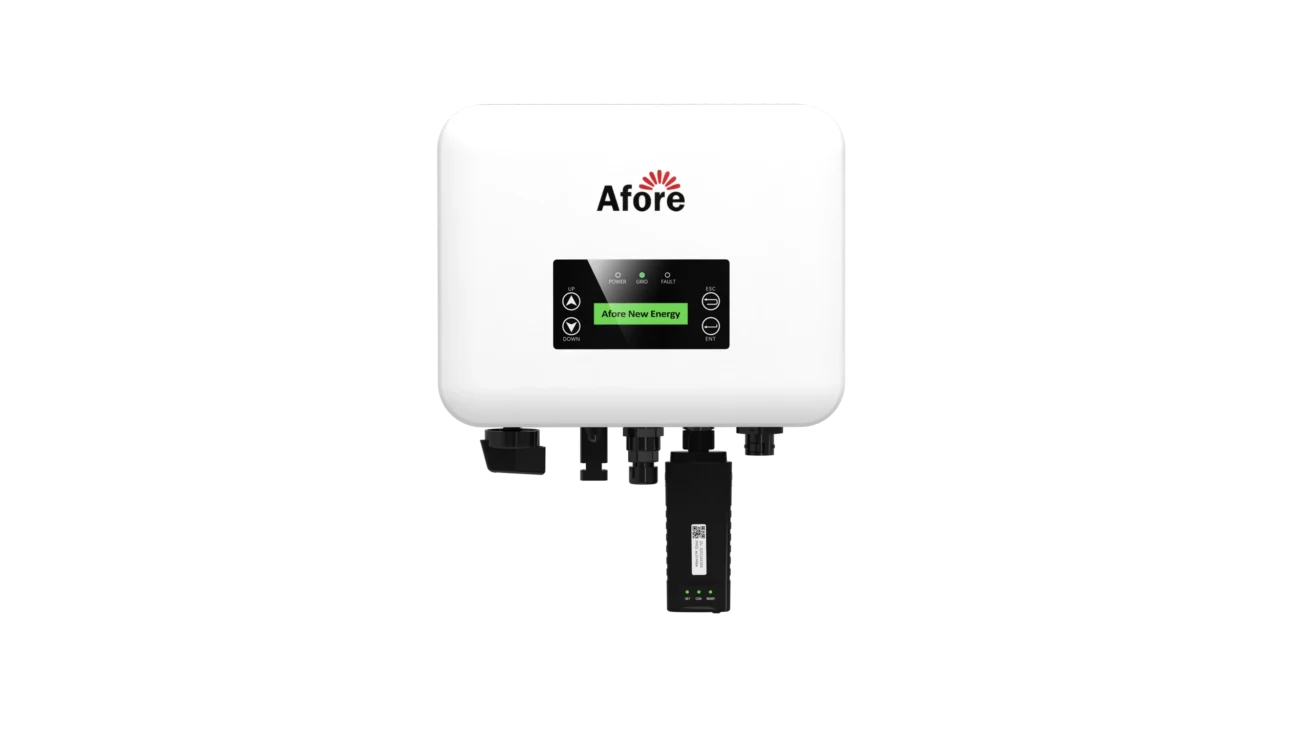
Ökologische und finanzielle Auswirkungen
Kostenvergleich: Mit vs. ohne Batterie
Schauen wir uns die typische Investition an:
- Mit Batterie: Höhere Anschaffungskosten, längere Amortisationszeit, aber Ersatzstromversorgung.
- Ohne Batterie: Geringere Installationskosten, schnellerer ROI, kein Backup bei Stromausfällen.
Für viele Haushalte bietet die Verwendung eines Wechselrichters ohne Batterie schnellere Erträge und einen einfacheren Weg zur Energieunabhängigkeit.
Vorteile für die Umwelt
Eine geringere Abhängigkeit von Batterien reduziert den Elektronikmüll und die Notwendigkeit, Lithium- oder Bleisäurekomponenten abzubauen. Wenn Ihr Gebiet über ein stabiles Stromnetz verfügt, kann ein Solar-Wechselrichter ohne Batterie eine umweltfreundlichere Lösung sein.
Schlussfolgerung
Die Verwendung eines Wechselrichters ohne Batterie ist für viele Haushalte und Unternehmen eine intelligente und effiziente Option, insbesondere in Gebieten mit einem zuverlässigen Netz und gleichmäßiger Sonneneinstrahlung. Er bietet die Vorteile der Solarenergie ohne die Kosten und den Wartungsaufwand, die mit Batterien verbunden sind.
Ob Sie nun ein budgetbewusster Hausbesitzer sind, ein Unternehmen, das den Tagesverbrauch optimieren möchte, oder einfach nur neugierig auf saubere Energie sind, die Welt der Solar-Wechselrichter und batterielosen Systemen ist Ihre Zeit wert. Mit Hybrid-WechselrichterDank der sich ständig weiterentwickelnden Technologien und der sinkenden Preise für Solarmodule war die Nutzung von Solarenergie noch nie so einfach wie heute - mit oder ohne Batterie.
Denken Sie nur daran: Erfolg in der Solarenergie beginnt mit einer guten Planung. Lassen Sie sich von einem qualifizierten Installateur beraten, wählen Sie den richtigen Solarwechselrichter und entscheiden Sie, ob ein Wechselrichter ohne Batterie zu Ihren Energiezielen passt.
Die Zukunft der Solarenergie ist flexibel, erschwinglich und zunehmend unabhängig von Batterien. Warum also nicht heute damit beginnen?
Häufig gestellte Fragen
1. Kann mein Wechselrichter auch ohne Batterie funktionieren?
Ja, Ihr Wechselrichter kann auch ohne Batterie einwandfrei funktionieren, wenn er für diese Art von Einrichtung ausgelegt ist. Netzgekoppelte und hybride Solarwechselrichter können unabhängig von Batterien funktionieren, vorausgesetzt, es besteht eine stabile Verbindung zum Stromnetz. Bei Tageslicht erzeugen Ihre Solarmodule Strom, und der Wechselrichter wandelt diesen in nutzbaren Wechselstrom für Ihr Haus oder Ihr Unternehmen um. Überschüssige Energie kann in das Stromnetz eingespeist werden, wenn in Ihrer Region Net Metering möglich ist.
Bedenken Sie jedoch, dass Ihr System bei einem Netzausfall ohne Batteriespeicher aus Sicherheitsgründen abgeschaltet wird (ein Protokoll, das als Anti-Islanding bekannt ist). Es ist zwar technisch und finanziell machbar, ein System ohne Batterien zu betreiben, aber Sie haben dann keine Notstromversorgung bei Stromausfällen.
2. Brauchen Sie eine Batterie für einen Wechselrichter?
Nicht unbedingt. Ob Sie eine Batterie brauchen oder nicht, hängt ganz von der Art des Solarwechselrichters ab, den Sie verwenden, und von Ihren spezifischen Energiezielen. Wenn Sie ein netzunabhängiges System in einem abgelegenen Gebiet planen, dann brauchen Sie auf jeden Fall Batterien, um Energie zu speichern und nachts oder bei schlechtem Wetter Strom zu liefern.
Aber für netzgekoppelte Häuser oder Unternehmen funktionieren viele Wechselrichter ohne Batterie nahtlos. Sie nutzen Solarstrom, wenn die Sonne scheint, und beziehen ihn bei Bedarf aus dem Netz. Hybrid-Wechselrichter bieten auch die Möglichkeit, später eine Batterie hinzuzufügen, was Flexibilität für künftige Upgrades bietet.
Kurz gesagt, eine Batterie ist zwar für die Energieunabhängigkeit oder den Schutz vor Stromausfällen unerlässlich, aber nicht für jeden Wechselrichtertyp oder jede Solarkonfiguration erforderlich.
3. Was sind die Nachteile eines Hybridwechselrichters?
Hybrid-Wechselrichter sind für ihre Flexibilität bekannt, aber sie haben auch ihre Nachteile. Hier sind ein paar potenzielle Nachteile, die Sie beachten sollten:
- Höhere Anschaffungskosten: Hybrid-Wechselrichter kosten aufgrund ihrer zusätzlichen Funktionen mehr als netzgekoppelte Standardmodelle.
- Komplexe Installation: Sie erfordern mehr Planung und eine genaue Konfiguration, insbesondere bei der Integration von Batteriespeichern.
- Probleme mit der Batteriekompatibilität: Einige Hybrid-Wechselrichter funktionieren nur mit bestimmten Marken oder Technologien, was Ihre späteren Speicheroptionen einschränken könnte.
- Leistungsmängel ohne Batterien: Die meisten Hybridgeräte können zwar als Wechselrichter ohne Batterie betrieben werden, aber nicht alle Modelle sind für diesen Einsatzzweck optimiert.
Trotz dieser Einschränkungen sind Hybrid-Solarwechselrichter eine gute Wahl für Nutzer, die Wert auf langfristige Flexibilität legen.
4. Kann man einen Wechselrichter direkt mit Solarmodulen betreiben?
Ja, das können Sie - aber nur, wenn Ihr Wechselrichter für diese Konfiguration ausgelegt ist. Viele netzgekoppelte und hybride Solarwechselrichter ermöglichen den direkten Betrieb von Solarmodulen während des Tages ohne Batteriespeicher. Bei dieser Konfiguration fließt die Energie von den Modulen zum Wechselrichter, wo sie in Wechselstrom umgewandelt und sofort genutzt werden kann.
Diese direkte Verbindung funktioniert jedoch am besten in Gebieten mit gleichmäßiger Sonneneinstrahlung und einem stabilen Stromnetz. Es ist wichtig, dass Sie Ihr System richtig dimensionieren und sicherstellen, dass der Eingangsbereich des Wechselrichters zu Ihrem Panel-Array passt. Nicht aufeinander abgestimmte Komponenten können Spannungsschwankungen und Stromunterbrechungen verursachen.
Sie können also durchaus einen Wechselrichter ohne Batterie direkt an den Solarmodulen betreiben - stellen Sie nur sicher, dass Ihr System von einem fachkundigen Installateur entworfen wurde.
5. Kann ich ein Solarmodul an einen Wechselrichter ohne Batterie anschließen?
Ganz genau. Dies ist eine übliche Konfiguration in modernen Solaranlagen, insbesondere in städtischen oder vorstädtischen Umgebungen, wo die Netzzuverlässigkeit hoch ist. Tatsächlich werden viele Systeme vom ersten Tag an genau so gebaut.
Und so funktioniert es: Die Solarmodule werden mit dem Solarwechselrichter verbunden, der die Gleichstromleistung in Wechselstrom umwandelt. Diese Energie versorgt Ihre Geräte in Echtzeit. Wenn überschüssige Energie vorhanden ist, kann sie ins Netz eingespeist werden - eine Batterie ist nicht erforderlich.
Dieses System ist eine praktische und kostengünstige Möglichkeit, die Energierechnungen zu senken und Ihren ökologischen Fußabdruck zu verringern. Und mit den richtigen Komponenten können Sie Ihr System später leicht erweitern, indem Sie Batterien hinzufügen, wenn sich Ihr Energiebedarf ändert.




